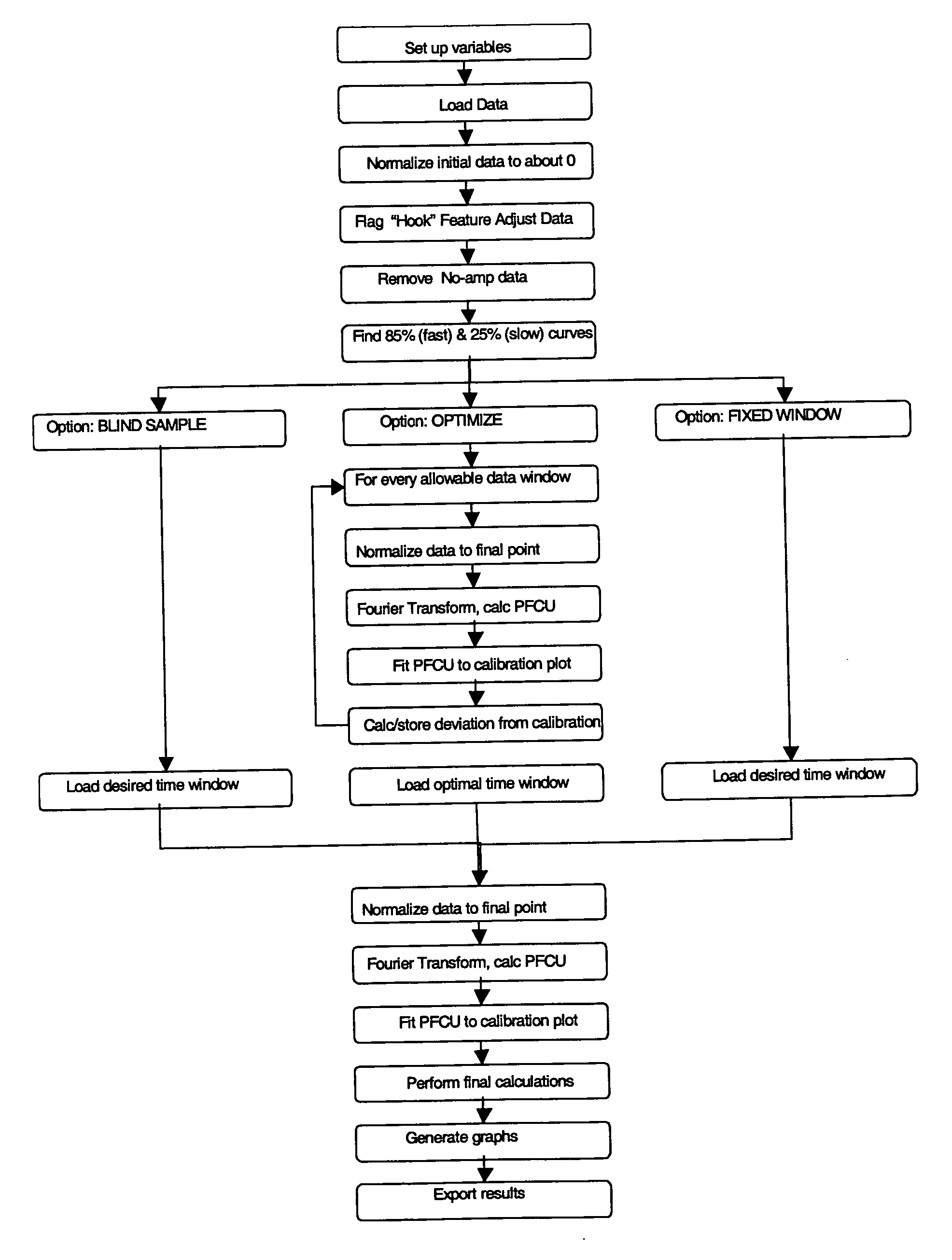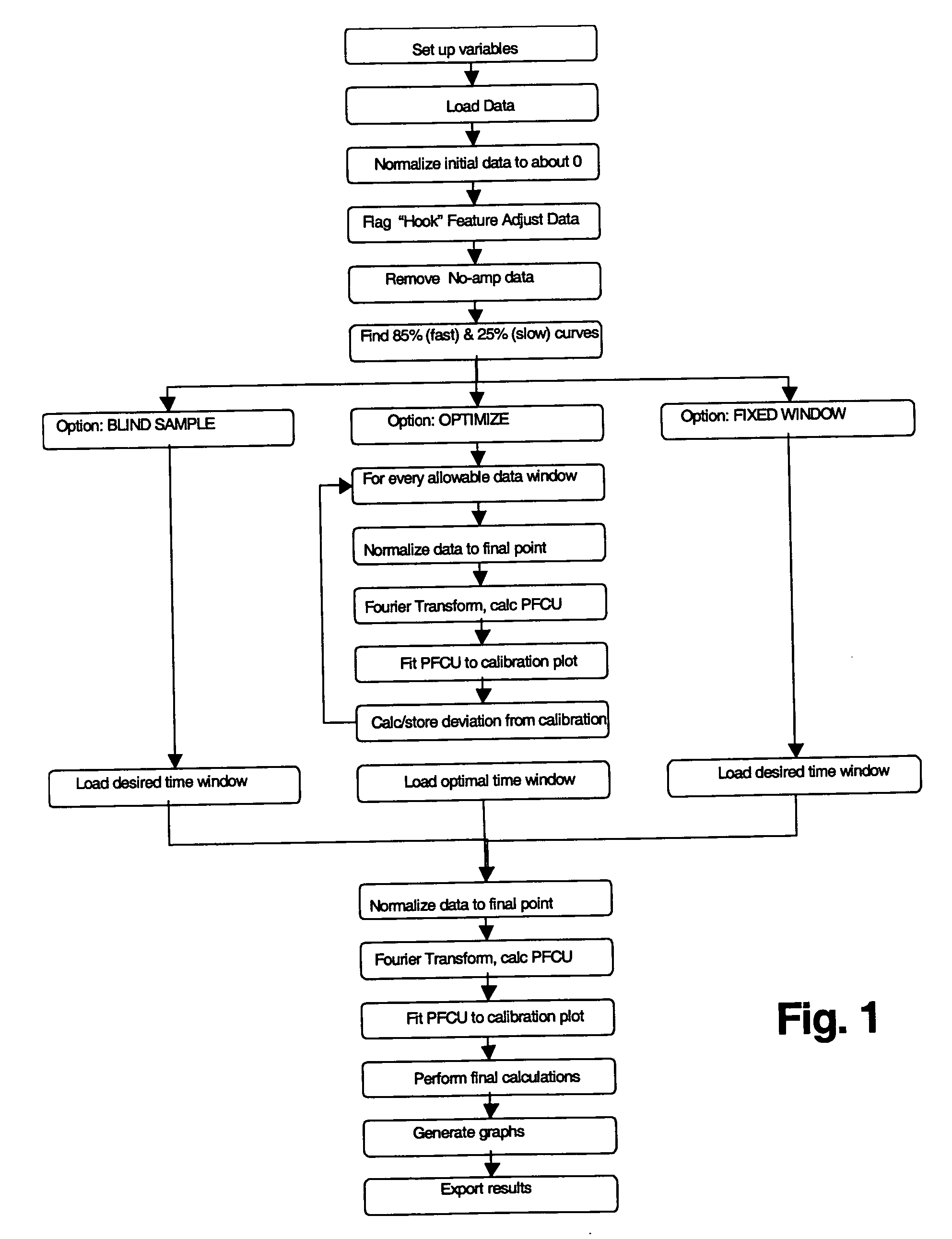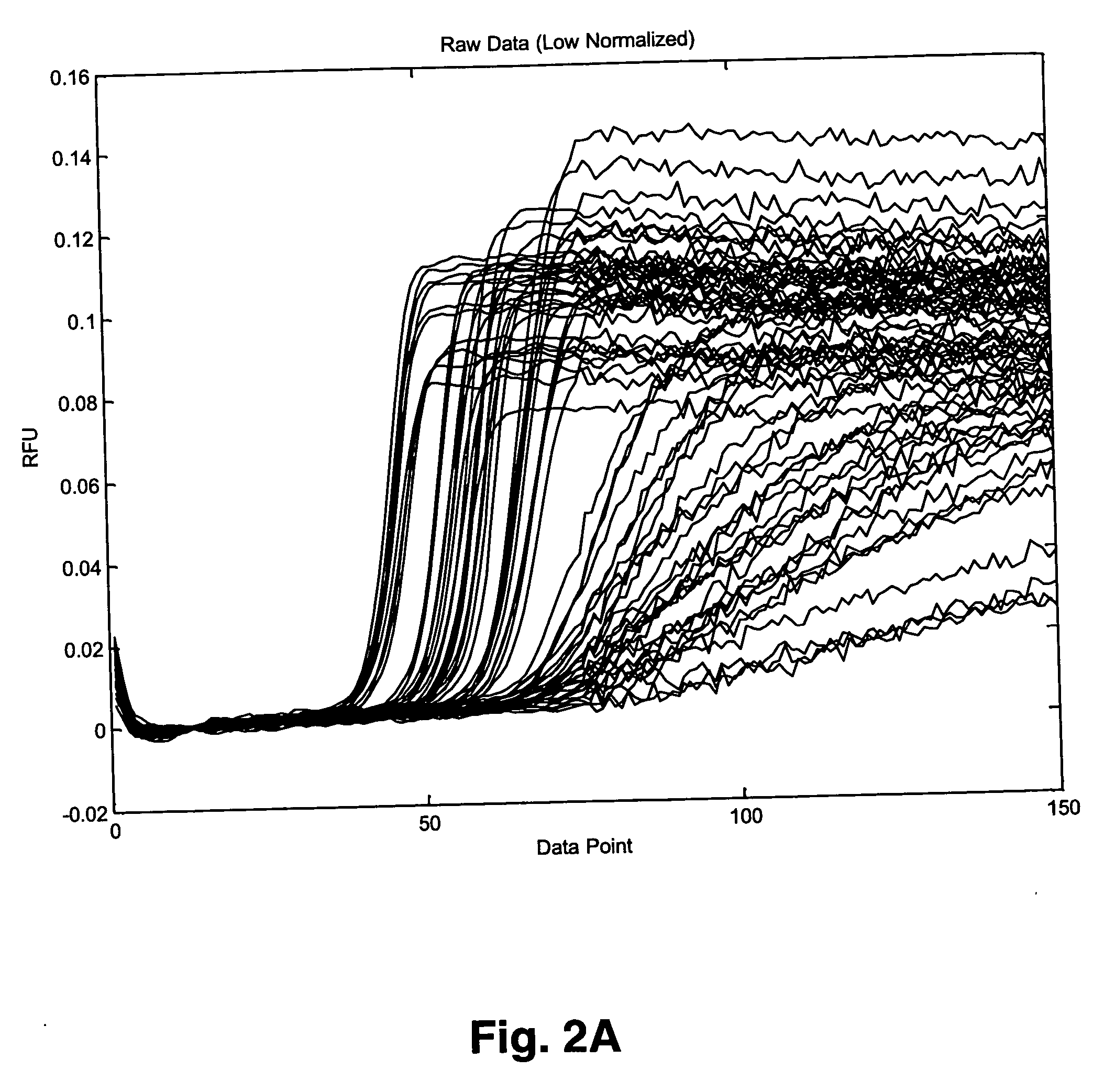Methods for quantitative analysis of a nucleic acid amplification reaction
a nucleic acid amplification and quantitative analysis technology, applied in the field of nucleic acid quantification, can solve the problems of ineffective amplification, inaccurate calculation of the initial amount of target nucleic acid in the reaction, and inaccurate estimation of the initial quantity or concentration of the analytical algorithm
- Summary
- Abstract
- Description
- Claims
- Application Information
AI Technical Summary
Problems solved by technology
Method used
Image
Examples
example 1
Analysis of Amplification Data Using the Fourier Transform Algorithm
[0041] This example demonstrates analysis of data using the Fourier Transform based algorithm described above for fluorescent signals obtained during real-time nucleic acid amplification of a sample that contained a known amount of an analyte (HIV-1 RNA at 0 to 5.7 log copies per reaction) and a known amount of a synthetic internal control (synthetic RNA at 400 copies per reaction). The assay included preparation of samples containing known amounts of the analyte and internal control RNA in a substantially aqueous solution, target capture of the analyte and internal control RNA from the solution using a mixture of capture oligomers, one specific for the analyte (SEQ ID NO:4) and one specific for the internal control (SEQ ID NO:8) and magnetic particles with an immobilized oligomer (50 μg / ml) that is partially complementary to each of the capture oligomers, using methods substantially as described previously in deta...
PUM
| Property | Measurement | Unit |
|---|---|---|
| temperature | aaaaa | aaaaa |
| concentration | aaaaa | aaaaa |
| time | aaaaa | aaaaa |
Abstract
Description
Claims
Application Information
 Login to view more
Login to view more - R&D Engineer
- R&D Manager
- IP Professional
- Industry Leading Data Capabilities
- Powerful AI technology
- Patent DNA Extraction
Browse by: Latest US Patents, China's latest patents, Technical Efficacy Thesaurus, Application Domain, Technology Topic.
© 2024 PatSnap. All rights reserved.Legal|Privacy policy|Modern Slavery Act Transparency Statement|Sitemap



